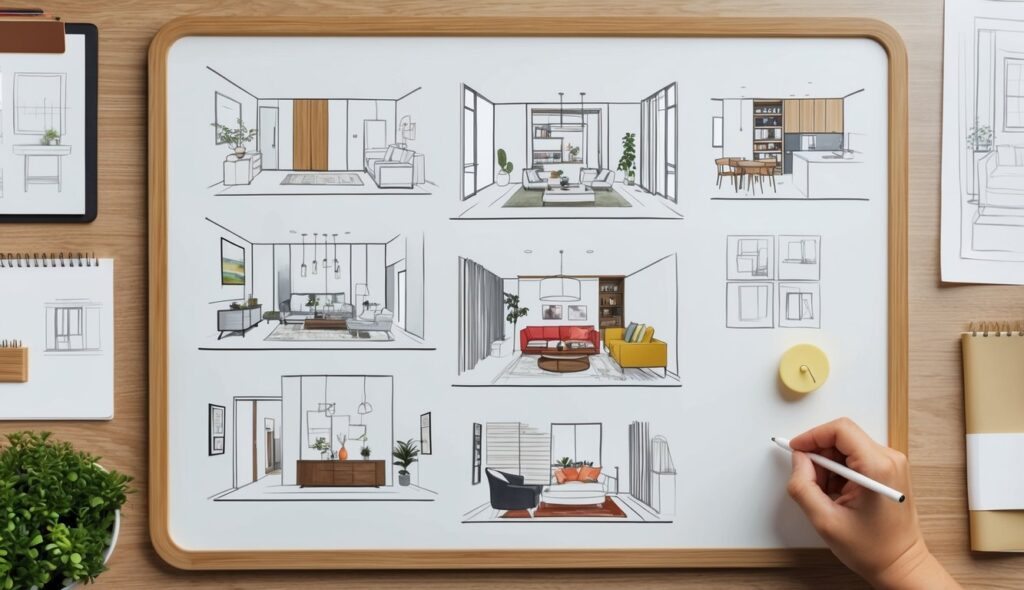The evolution of teak furniture in architecture showcases a seamless blend of traditional craftsmanship and modern design principles.
Remember to repin your favorite images!
Teak, known for its durability and rich aesthetic appeal, has played a pivotal role in both ancient and contemporary structures.
From ancient shipbuilding to mid-century modern homes, the versatility of teak continues to inspire architects and designers globally.
Incorporating teak furniture into modern architecture not only elevates the design but also ensures longevity and resilience.
Its inherent oils and dense grain make it highly resistant to weather and pests, making it an ideal choice for both indoor and outdoor applications.
This quality aligns perfectly with sustainable design practices, as teak furniture can withstand the test of time without frequent replacement or repair.
Mid-century modern design, with its focus on clean lines and functionality, often highlights the sinuous, airy qualities of teak.
The interplay between teak’s natural beauty and minimalist design creates spaces that are both elegant and welcoming.
Architects are increasingly combining mid-century pieces with contemporary elements, demonstrating teak’s timeless relevance in today’s architectural landscape.
For further insight into teak’s impact on design, the versatility of teak wood is a testament to its enduring appeal.
Historical Development and Influence
Teak furniture has a rich history intertwined with architectural advancements. Its journey from early use in basic structures to becoming a staple in modern design showcases its versatility and durability.
Origins and Early Use in Architecture
Teak’s origins in architecture date back to ancient times. Known for its durability, it was commonly used in shipbuilding in Southeast Asia.
The wood’s natural resistance to termites and water made it an excellent material for both structures and furniture.
Early Southeast Asian builders utilized teak for its strength and longevity.
They carved dense, intricate designs that could withstand the humid climate.
The use of teak expanded over time, influenced by various cultures and architectural styles, preserving its status as a prized material.
Classic to Modern: Transition in Teak Furniture Design
As architecture evolved, so did the design principles of teak furniture.
During the colonial era, European designs influenced local practices, blending classic styles with traditional craftsmanship.
This period marked the introduction of more elaborate carvings and ornamental features.
The mid-century modern movement brought streamlined aesthetics, focusing on clean lines and functional forms.
Teak became a favorite for its warm tones and flexible shaping.
Many classic pieces from this era remain highly sought-after, reflecting the timeless appeal of teak in furniture design.
Impact of Scandinavian Design on Teak Furniture
Scandinavian design had a profound impact on teak furniture.
In the mid-20th century, Danish architects and designers like Hans Wegner and Arne Jacobsen celebrated simplicity and functionality.
Their work emphasized natural materials, and teak became central to their designs.
Teak’s smooth grain and workability made it ideal for the minimalist yet elegant styles characteristic of this design movement.
The enduring quality and understated beauty of Scandinavian teak furniture continue to influence contemporary design trends and architectural preferences.
Iconic Designers and Their Timeless Teak Creations
Several iconic designers have left a lasting mark on teak furniture design.
Hans Wegner is renowned for his innovative chairs, merging comfort with sleek aesthetics.
His “Wishbone Chair” remains a symbol of craft excellence.
Arne Jacobsen’s contribution includes the “Egg Chair,” showcasing the sculptural potential of teak.
Charles and Ray Eames further revolutionized design by incorporating teak into their modernist creations.
Their furniture combined functionality with artful simplicity, cementing teak’s role in high-end design.
These designers’ timeless teak creations continue to inspire and remain fixtures in both historic and contemporary architectural settings.
Materiality and Craftsmanship in Teak Furniture
Teak furniture design has evolved significantly, focusing on sustainability, innovative use of materials, and high-level craftsmanship. This section examines these critical aspects in detail.
Sustainability and Eco-Friendly Practices
Sustainability is a primary concern in modern teak furniture design.
Teak comes from sustainably managed plantations and is known for its durability, reducing the need for frequent replacements.
This not only conserves resources but also minimizes waste.
Architects and designers prioritize eco-friendly practices, such as using water-based finishes and low-VOC adhesives, to minimize environmental impact.
Additionally, the use of reclaimed teak from older structures contributes to sustainable practices by giving new life to old wood, reducing the demand for freshly harvested timber.
Innovations in Teak Furniture Design and Materials
Innovations in teak furniture design have expanded beyond traditional applications.
Advances in woodworking technology allow for more intricate designs and efficient use of materials.
CNC machines enable precise cuts, creating complex patterns and decorative elements that were once difficult to achieve by hand.
Additionally, newer treatments enhance teak’s natural resistance to weather and pests, making it ideal for outdoor furniture.
These advancements also lead to hybrid designs that incorporate other materials like metal or glass, providing functional and aesthetic versatility in both residential and commercial architecture.
The Art of Craftsmanship in Teak Woodworking
The craftsmanship involved in teak woodworking is a blend of traditional skills and modern techniques.
Expert artisans skillfully handle teak’s dense grain to create smooth finishes and detailed carvings.
The art of joinery is also crucial, as it determines the furniture’s durability and structural integrity.
Mortise and tenon joints, for example, are commonly used in high-quality teak furniture for their strength.
Craftsmen often work with designers to create bespoke pieces tailored to specific needs, ensuring that each piece is not only functional but also a work of art.
The emphasis on craftsmanship ensures that each furniture piece stands the test of time, both in terms of durability and design.

